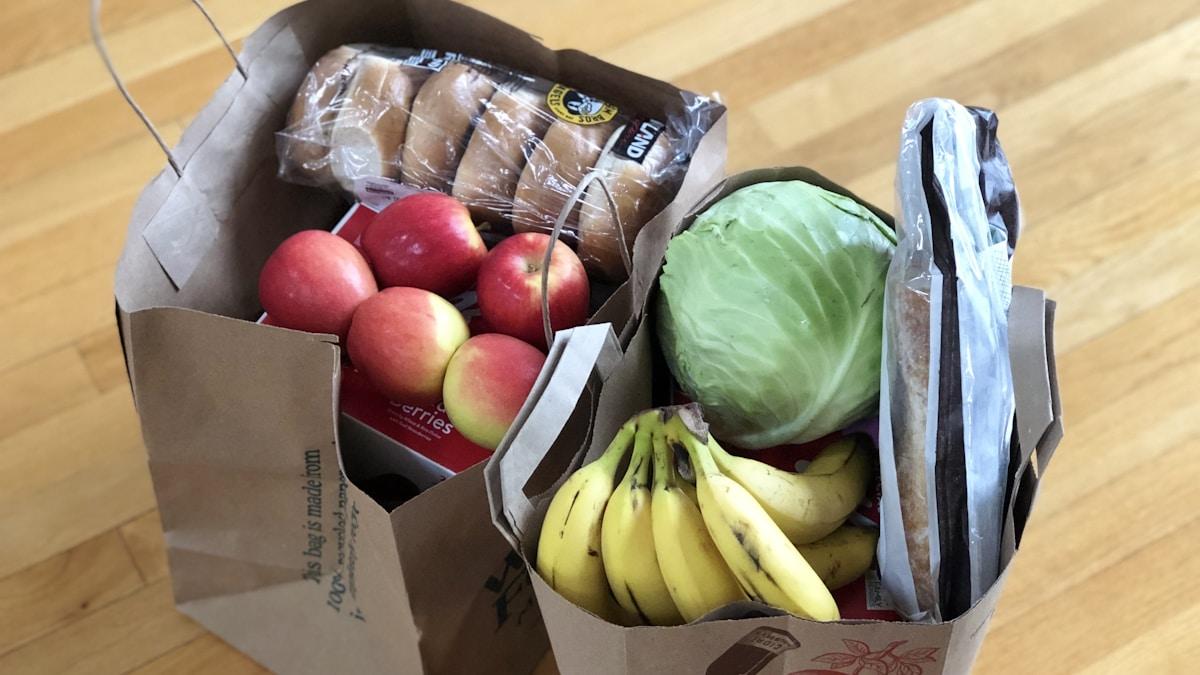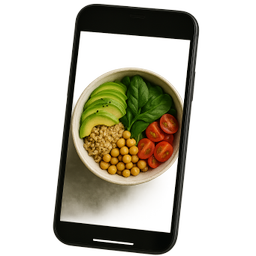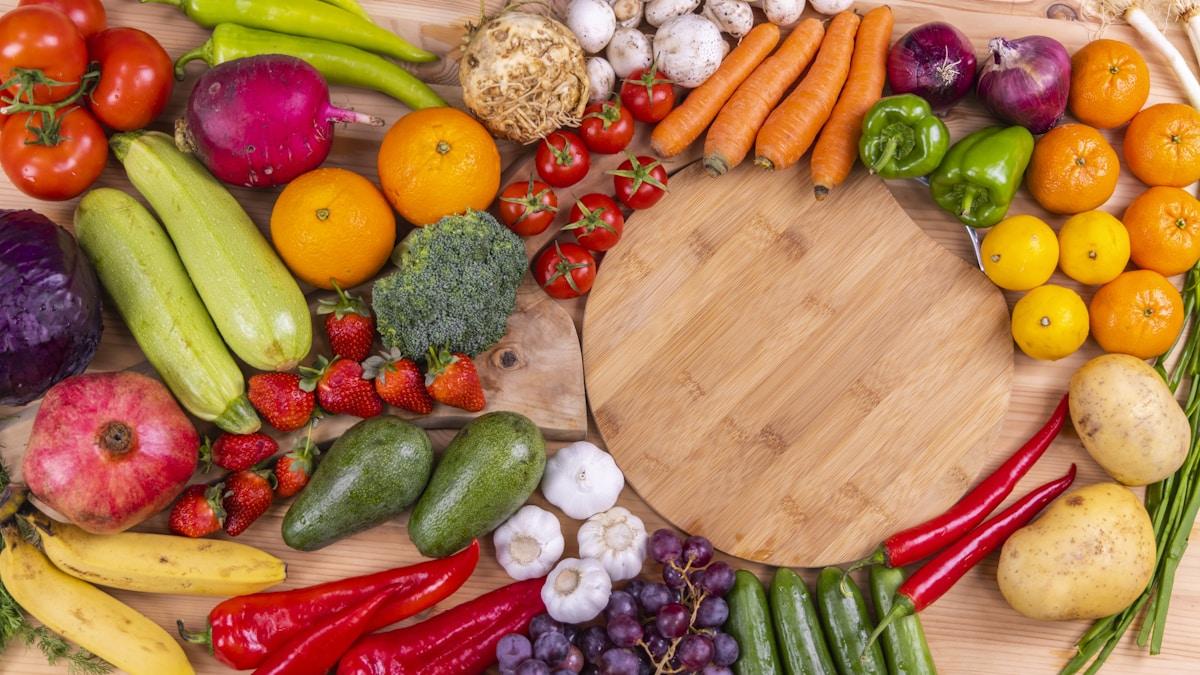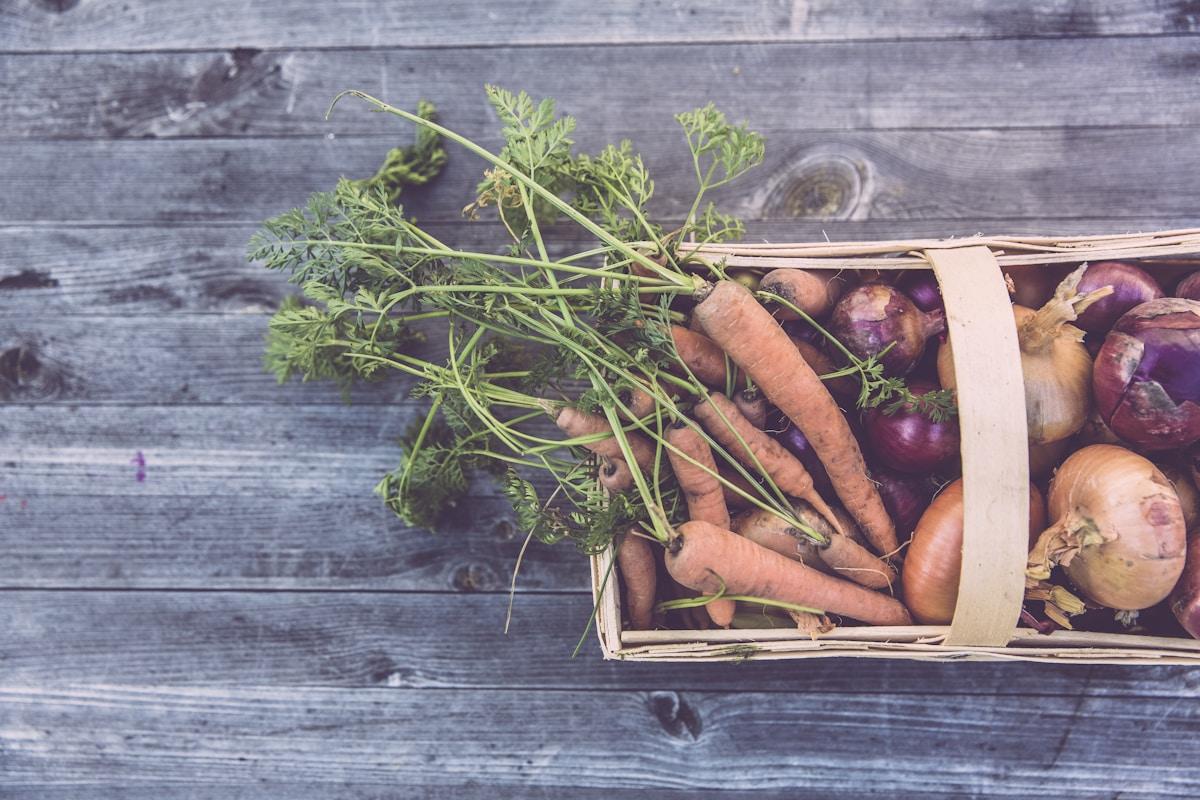
How to Read Nutrition Labels Like a Dietitian: Decode Food Packaging in 60 Seconds
Learn the dietitian-approved method to decode nutrition labels in under 60 seconds. Discover what to look for, what to avoid, and how to make smarter grocery choices.
Verdu Team
The team behind Verdu, your AI-powered nutrition companion
You're standing in the grocery store aisle, holding two seemingly identical boxes of cereal. One claims "whole grain goodness!" The other boasts "low fat!" Both have colorful packaging and health claims splashed across the front. Which one is actually better for you?
Here's the truth: The answer is on the back of the box, not the front. And if you know how to read a nutrition label properly, you can figure it out in less than 60 seconds.
Most people either ignore nutrition labels entirely or get overwhelmed by the numbers and percentages. But dietitians have a simple, systematic approach that cuts through the marketing noise and reveals what's really in your food. Let me show you exactly how they do it.
Why Nutrition Labels Actually Matter
Before we dive into the "how," let's talk about the "why."
The FDA requires nutrition labels on most packaged foods to help consumers make informed choices. These labels provide standardized information about serving sizes, calories, and nutrients—allowing you to compare products side by side.
And here's the thing: reading labels makes a real difference. Research consistently shows that people who read nutrition labels tend to consume fewer calories, less saturated fat, and more fiber compared to those who don't. It's one of the simplest habits with the biggest health payoff.
The challenge? Most people don't know where to start or what to prioritize. So they either skip the label entirely or focus on the wrong things (like zeroing in on calories while ignoring added sugars or sodium).
Let's fix that.
The 60-Second Nutrition Label Method
Dietitians don't read every single line of a nutrition label. Instead, they follow a quick, strategic checklist that reveals the most important information in seconds. Here's the exact method they use:
Step 1: Start with Serving Size & Servings Per Container
This is always the first thing to check—and it's the most commonly overlooked detail on the entire label.
Why? Because every other number on the label is based on the serving size. If you eat two servings, you need to double everything: calories, fat, sugar, sodium, all of it.
According to the FDA, serving sizes are standardized based on amounts people typically eat, not necessarily the amount you should eat. And here's the kicker: many packages that look like single servings actually contain two or even three servings.
Real-world example: That bottle of iced tea? It might list 80 calories per serving—but if the bottle contains 2.5 servings, you're actually drinking 200 calories.
The 60-second check: Look at the top of the label. Note the serving size and servings per container. Ask yourself: "Am I going to eat more than one serving?" If yes, do the mental math before you buy.
Step 2: Check the Calories
Once you know the serving size, look at calories. This tells you how much energy you're getting from one serving of the food.
Mayo Clinic offers a simple guideline for quick calorie assessment:
- 40 calories = low
- 100 calories = moderate
- 400+ calories = high
There's no "good" or "bad" calorie count—it depends on your goals, activity level, and the role this food plays in your diet. A 400-calorie meal is very different from a 400-calorie snack.
The 60-second check: Glance at the calorie count. Consider whether this fits your needs for a meal, snack, or treat.
Step 3: Limit These Nutrients (The "Get Less" List)
Now comes the critical part: identifying nutrients you want to limit for better health. According to the American Heart Association, these are the top three to watch:
1. Saturated Fat
- Keep it low to support heart health
- Look for 5% Daily Value (DV) or less per serving
2. Sodium
- High sodium intake is linked to high blood pressure
- Aim for 5% DV or less per serving
- Anything above 20% DV is considered high
3. Added Sugars
- This is different from naturally occurring sugars (like those in fruit or milk)
- The FDA now requires added sugars to be listed separately
- Limit to less than 10% of daily calories (roughly 50g for a 2,000-calorie diet)
Pro tip from dietitians: Use the 5/20 rule. If a nutrient has 5% DV or less, it's low. If it has 20% DV or more, it's high. For nutrients you want to limit (saturated fat, sodium, added sugars), choose products on the lower end.
The 60-second check: Scan these three nutrients. If any are above 20% DV, that's a red flag worth noting.
Step 4: Get More of These Nutrients (The "Get More" List)
While limiting certain nutrients, you also want to seek out foods rich in beneficial nutrients your body needs.
According to Harvard's Nutrition Source, prioritize foods that provide:
Dietary Fiber
- Supports digestive health, helps you feel full, and may lower cholesterol
- Aim for at least 3 grams per serving for whole grain products
- 20% DV or more is excellent
Protein
- Essential for muscle repair, immune function, and satiety
- Good sources: lean meats, fish, beans, nuts, dairy
Vitamins & Minerals
- Vitamin D: Supports bone health and immune function
- Calcium: Critical for bones and teeth
- Iron: Necessary for oxygen transport in blood
- Potassium: Helps regulate blood pressure
The 60-second check: Look for foods with higher % DV for fiber, protein, vitamin D, calcium, iron, and potassium. These add nutritional value to your diet.
Step 5: Scan the Ingredient List
Most people skip this part, but dietitians consider it essential.
Ingredients are listed in descending order by weight, meaning the first few ingredients make up the bulk of the product. Harvard Health recommends steering clear of foods that list sugar, honey, molasses, corn syrup, or high-fructose corn syrup among the first three ingredients.
What to look for:
- Whole grains listed first (whole wheat, whole oats, brown rice)
- Recognizable ingredients (you should be able to pronounce most of them)
- Shorter ingredient lists (generally indicates less processing)
Red flags:
- Added sugars in the top 3 (especially multiple types—food manufacturers sometimes split sugars into different names to keep them lower on the list)
- Hydrogenated oils (trans fats, which are harmful to heart health)
- Long lists of additives you don't recognize
The 60-second check: Read the first three ingredients. If they're whole foods (whole wheat, oats, chicken, etc.), that's a good sign. If they're sugar and refined grains, proceed with caution.
Common Nutrition Label Mistakes
Even health-conscious people make these errors when reading labels:
Mistake #1: Ignoring Serving Sizes
This is the #1 mistake. People see "100 calories" and think, "Great, low calorie snack!" without realizing the package contains four servings. Suddenly, that snack is 400 calories.
Fix: Always check servings per container first. Multiply the nutrition info by the number of servings you'll actually eat.
Mistake #2: Thinking % Daily Value Adds Up to 100%
The % DV column doesn't add up vertically. Each percentage tells you how much of that specific nutrient one serving provides based on a 2,000-calorie diet.
Fix: Evaluate each nutrient independently. A food can be 5% DV for saturated fat and 25% DV for fiber—these don't need to "balance out."
Mistake #3: Only Looking at Calories
Calories matter, but they're not the whole story. A 200-calorie protein bar with 20g of protein and 5g of fiber will keep you satisfied much longer than 200 calories of candy.
Fix: Look at the full picture—calories, protein, fiber, added sugars, and sodium all matter.
Mistake #4: Trusting Front-of-Package Claims
"Low fat!" "All natural!" "Made with whole grains!" These marketing claims are designed to sell products, not necessarily to inform you about nutrition.
Fix: Ignore the front of the package. Flip it over and read the Nutrition Facts label and ingredient list. That's where the truth lives.
Pro Tips from Registered Dietitians
Want to level up your label-reading game? Here are insider strategies dietitians actually use:
Tip #1: Compare Products Side by Side
When choosing between similar products (pasta sauces, yogurts, cereals), hold them side by side and compare the Nutrition Facts labels directly.
What to compare:
- Serving size (make sure they're similar)
- Added sugars (lower is better)
- Sodium (aim for less than 400mg per serving for most foods)
- Fiber and protein (higher is better)
Tip #2: Use % Daily Value as Your Guide
The % DV is your quick-reference tool. Remember:
- 5% or less = low (use this for saturated fat, sodium, added sugars)
- 20% or more = high (use this for fiber, protein, vitamins, minerals)
Tip #3: Don't Fear All Fats
Not all fats are created equal. Unsaturated fats (found in nuts, seeds, avocados, olive oil, and fish) support heart health. Saturated fats and trans fats should be limited.
Check the label: if most of the fat is unsaturated, that's a positive sign.
Tip #4: Watch Out for Sugar Aliases
Sugar goes by many names: cane sugar, cane juice, agave nectar, honey, molasses, corn syrup, dextrose, fructose, maltose—the list goes on. If multiple types of sugar appear in the ingredient list, the product is likely high in added sugars.
Tip #5: Prioritize Whole Foods When Possible
As Kathy McManus, director of the Department of Nutrition at Harvard-affiliated Brigham and Women's Hospital, points out: Fresh whole foods without labels—especially fruits and vegetables—may be the wisest choice.
Nutrition labels are incredibly useful, but whole foods like apples, broccoli, chicken breast, and quinoa don't need labels because they're inherently nutritious.
How Technology Speeds Up the Process
Let's be real: even with the 60-second method, reading labels for every single item in your cart takes time. And if you're trying to track your overall nutrition for the day—not just individual products—it gets complicated fast.
This is where technology becomes a game-changer.

Instant Nutrition Analysis
Imagine this: you snap a photo of your meal, and within seconds, you see a complete nutrition breakdown—calories, macros, vitamins, and minerals. Verdu's AI-powered meal scanning does exactly that, eliminating the need to manually read labels or enter food data.
Whether you're comparing two products at the grocery store or tracking your daily nutrition, Verdu gives you instant, accurate insights without the tedious math. It's like having a dietitian in your pocket.
Here's what makes AI nutrition tracking so powerful:
- No manual entry: Just snap a photo of your plate or the nutrition label itself
- Instant breakdown: See calories, protein, carbs, fats, fiber, and micronutrients in seconds
- Daily tracking: Understand how individual foods fit into your overall nutrition goals
- Product comparison: Quickly compare products side by side without crunching numbers
- Personalized insights: Get recommendations tailored to your specific dietary needs and goals
For people who are serious about nutrition but don't want to spend hours tracking every meal, this technology removes the friction that usually makes healthy eating feel like a part-time job.
Your Quick-Reference Nutrition Label Cheat Sheet
Here's the 60-second method in a nutshell—screenshot this or keep it on your phone for quick reference at the store:

The 60-Second Label Reading Checklist
1. Serving Size & Servings Per Container
- First thing to check—everything else depends on this
- Multiply nutrition info if you'll eat more than one serving
2. Calories
- Quick gauge: 40 = low, 100 = moderate, 400+ = high
- Consider your goals and how this fits into your day
3. Nutrients to Limit (aim for 5% DV or less)
- Saturated fat
- Sodium
- Added sugars
4. Nutrients to Get More Of (aim for 20% DV or more)
- Dietary fiber
- Protein
- Vitamin D, calcium, iron, potassium
5. Ingredient List
- Check first 3 ingredients
- Look for whole grains and whole foods
- Avoid added sugars in top 3
Put Your Skills Into Action
You now have the exact method dietitians use to decode nutrition labels in 60 seconds or less. Here's how to start using it today:
Start Small
Don't try to analyze your entire pantry overnight. Instead, choose 3 products you buy regularly this week and practice the 60-second method. Compare brands, check the serving sizes, and see if you've been missing any red flags.
Shop Smarter
Next time you're at the grocery store, use the checklist to compare similar products side by side. You might be surprised to discover that the "healthy" option has more added sugar than the regular version.
Track the Big Picture
Reading individual labels is helpful, but understanding your overall nutrition throughout the day is where the real magic happens. Whether you do this manually or use AI-powered tools like Verdu, tracking your daily intake helps you see patterns, hit your goals, and make adjustments when needed.
The Bottom Line
Food labels are designed to inform, but they're often surrounded by marketing claims meant to confuse. The Nutrition Facts label on the back of the package is your source of truth.
With the 60-second method, you can cut through the noise, spot red flags, and make choices that align with your health goals—whether you're trying to eat more protein, reduce added sugars, or simply feed your family nutritious meals.
You don't need to be a dietitian to make smart food choices. You just need to know where to look and what to prioritize. And now you do.
Ready to take the guesswork out of nutrition tracking?
Download Verdu to get instant nutrition insights from any meal, compare products effortlessly, and make smarter food choices without spending hours reading labels. Your personalized AI nutrition coach is waiting.
Want more nutrition guidance? Check out our guide on Understanding Macronutrients or learn about The Mediterranean Diet.
Related Articles

Understanding Micronutrients: The Essential Vitamins and Minerals Your Body Needs Daily
Complete guide to essential vitamins and minerals: what they do, how much you need, and the best food sources to meet your daily micronutrient requirements.

Portion Control Made Easy: Visual Guides to Right-Sizing Your Meals Without Measuring
Master portion control without measuring cups or scales. Learn simple hand methods, plate techniques, and visual guides to manage serving sizes for better weight management and mindful eating.

Healthy Fats vs. Unhealthy Fats: The Complete Guide to Omega-3s, Saturated Fats, and More
Learn which fats support your health and which to avoid. Complete guide to omega-3s, saturated fats, unsaturated fats, and trans fats with science-backed recommendations.